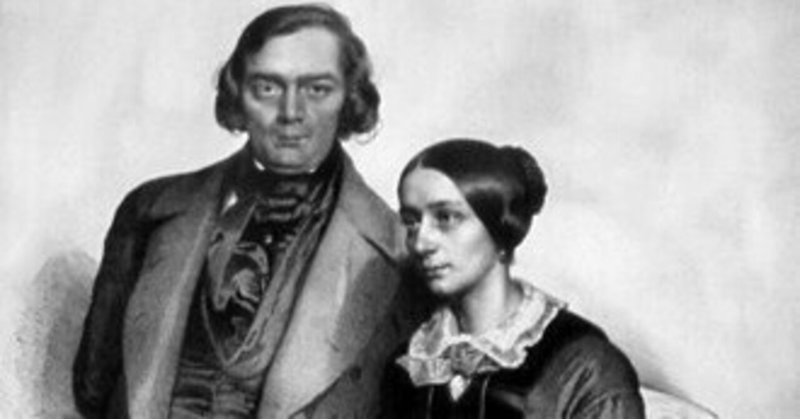
声の魔法 - ジェシー・ノーマンが紡ぐシューマンの詩世界
『女の愛と生涯』(Frauenliebe und Leben)は、ロベルト・シューマンが1840年に作曲した連作歌曲で、作品42として知られています。この作品はアーデルベルト・フォン・シャミッソーの詩に基づいており、一人の女性の一生を通じての愛と生涯を描いています。
この歌曲集は以下の8曲から構成されています:
Seit ich ihn gesehen- 彼に会って以来
Er, der Herrlichste von allen- 彼は誰よりも素晴らしい人
Ich kann's nicht fassen, nicht glauben- 分からない、信じられない
Du Ring an meinem Finger- わたしの指の指輪よ
Helft mir, ihr Schwestern- 手伝って、妹たち
Süßer Freund, du blickest- やさしい人、あなたは見つめる
An meinem Herzen, an meiner Brust- わたしの心に、わたしの胸に
Nun hast du mir den ersten Schmerz getan- 今、あなたは初めてわたしを悲しませる
これらの曲は、女性が未来の夫と出会い、結婚し、最後に夫の死を悼むまでの感情の変遷を表現しています。特にピアノの独立性が高く、声楽と対等な立場で音楽表現に寄与している点が特徴的です。また、最初の主題が最後の曲で繰り返される循環形式風の試みも見られます。
ノーマンの声の純粋さに引き込まれることから始まります。
メゾ・ソプラノからソプラノへの転向を経たノーマンは、1975年のこの録音で、メゾ時代の豊かな情感表現とソプラノとしてのロマンティックな表現を見事に融合させています。
彼女の歌唱は、シューマンの「女の愛と生涯」を一人の女性のドラマとして捉え、劇的かつ情感豊かに歌い上げています。
歌い回しの巧みさで知られるノーマンは、各曲の特徴を的確に捉え、深い表現力で聴き手を魅了します。
オペラ的な表現がやや大袈裟に感じられることもありますが、彼女の語りかけるような歌唱は、世界のプリマドンナとしての地位を確固たるものにしています。
ノーマンの歌唱は、その包容力で聴き手の心を無限に広がる世界へと導きます。
シューマンの繊細な感情表現をすべて捉えるには彼女の声の「大きさ」が必ずしも必要ではないかもしれませんが、ノーマンが伝えるヒューマンなメッセージは、これまでにないシューマンの新たな姿を示しています。
Magic of Voice - The world of Schumann's poetry spun by Jessye Norman
Frauenliebe und Leben (Frauenliebe und Leben) is a song cycle composed by Robert Schumann in 1840, also known as Opus 42. This work is based on a poem by Adelbert von Chamisseau and depicts the love and life of a woman throughout her life.
This collection of songs consists of the following 8 songs:
Seit ich ihn gesehen- Ever since I met him
Er, der Herrlichste von allen- He is the best of all.
Ich kann's nicht fassen, nicht glauben- I don't know, I can't believe it.
Du Ring an meinem Finger-
Helft mir, ihr Schwestern- Help me, sisters.
Süßer Freund, du blickest- Kind, you look.
An meinem Herzen, an meiner Brust- In my heart, in my chest
Now you make me sad for the first time
These songs express the vicissitudes of a woman's emotions from meeting and marrying her future husband to finally mourning the death of her husband. The piano is particularly distinctive in that it is highly independent and contributes to musical expression on an equal footing with vocal music. There is also an attempt at a circular style, with the first theme repeated in the last song.
It begins by being drawn in by the purity of Norman's voice.
In this 1975 recording, Norman, who transitioned from mezzo-soprano to soprano, perfectly combines the emotional richness of her mezzo days with the romantic expressions of her soprano career.
Her singing captures Schumann's ``The Love and Life of a Woman'' as a drama about a woman, and sings it dramatically and emotionally.
Known for her skill with delivery, Norman accurately captures the characteristics of each of her songs and captivates her listeners with her deep expressiveness.
Although her operatic expressions can sometimes feel a little exaggerated, her speaking delivery cements her position as the world's prima donna.
Her Norman singing takes her listeners into an infinite world with her inclusiveness.
The "loudness" of her voice may not necessarily be necessary to capture all of Schumann's delicate emotional expressions, but the human message that Norman conveys shows a new image of Schumann that has never been seen before.

よろしければサポートお願いします! いただいたサポートはクリエイターとしての活動費に使わせていただきます!

